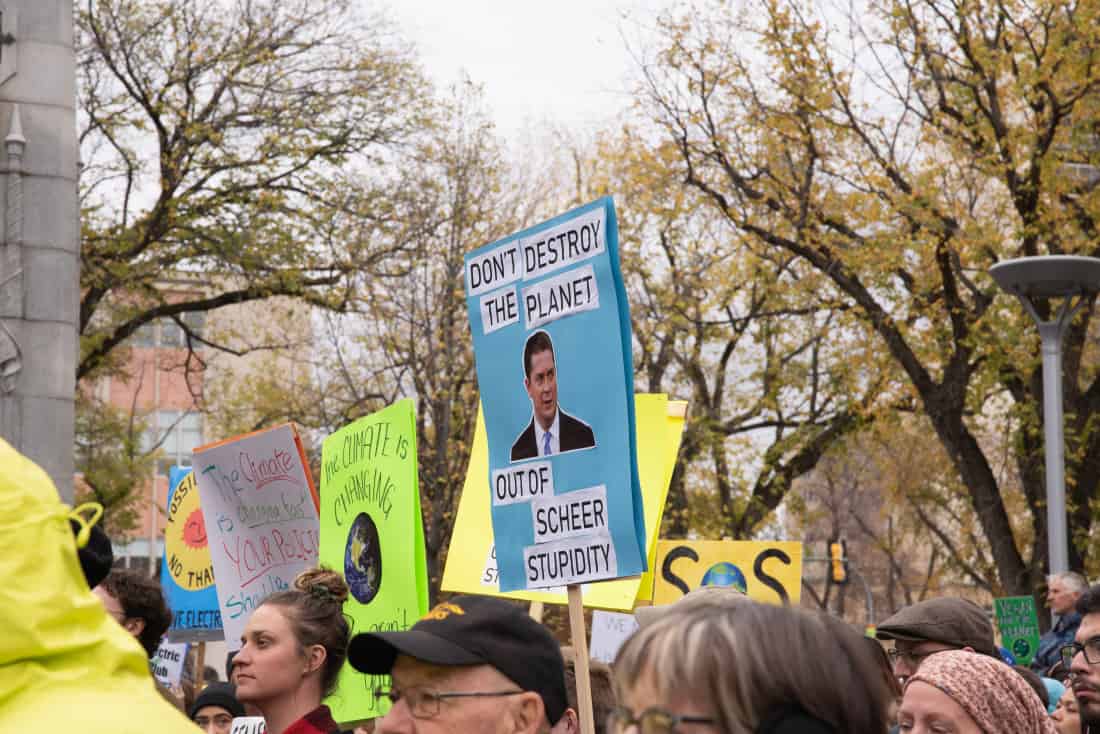
Keeping up with the promises of each prime minister candidate feels like straining spaghetti in a colander with holes that are just too big.
With influential teenagers like Greta Thunberg and Autumn Peltier putting climate action at the forefront for a new generation of voters, the pressure is on for politicians to deliver.
To make sure you get the scoop on who’s on your side, here’s a recap on what each political candidate has in store for the environment.
Justin Trudeau and the Liberals plan to continue with the nation-wide ban on single-use plastics by 2021 and aspire for a net-zero emissions rate by 2050.
Seeing as the oil and gas industry is Canada’s largest contributor to greenhouse gases, this goal would require a large amount of money and effort and would leave no room for the industry. Ambitions are important, but this seems a tad underbaked.
The Liberals are being criticized for some of their long-term goals because their short-term goal of cutting emissions by 224.7 megatonnes by 2030 is looking unlikely. However, when compared to Jagmeet Singh and the NDP’s goal of cutting emissions 450 megatonnes of by the same year, the Liberal’s goal seems a bit more feasible.
Singh also looks to protect at least 30 per cent of Canada’s freshwater, oceans and land by 2030 and abandon the Trans Mountain Pipeline project, a project approved under the current Liberal government to facilitate oil transportation. While the NDP is striving for a single-use plastic ban as well, their cut-off date is 2022 as part of a broader strategy for waste reduction.
Andrew Scheer and the Conservative party have far fewer goals concerning the climate. While the other parties have turned their focus to grander goals, Scheer looks to bring back the public transit credit. This is attractive to university students, but the party’s other goals are lacklustre by comparison.
Scheer released the Conservative climate action plan involving the strategy called “green technology, not taxes.” It also promises to “increase the availability and use of renewable fuels and to decrease the carbon intensity of Canada’s fuel mix,” but leaves out any specific plans for reaching these goals.
Conservatives also look to set standards for emitters producing more than 40 kilotonnes of greenhouse gases per year, but evaluations of these plans deduce it would make it virtually impossible for any future government to achieve the Paris Agreement conditions Canada committed to. After refusing to participate in a climate debate this week, it looks like the Conservatives don’t see this as a priority.
It’s no surprise that the Green party has the most ambitious plans for climate action. Elizabeth May aims for a 60 per cent reduction below 2005’s greenhouse gas emissions by 2030.
The Green party, like the NDP, endeavours to protect 30 per cent of Canada’s freshwater, oceans and land by 2030. They also have a plastic ban of their own in-store, specifying which plastics have simply got to go — styrofoam and cigarette filters are included in this plan.
In news that will surely please Philippine President Rodrigo Duterte, May and her party promise to cease Canada’s exporting of solid waste to other countries. No more declarations of war over poorly managed garbage for this country if May is elected prime minister.
—
Gavin Robertson
Photo: Victoria Becker/ Photo Editor